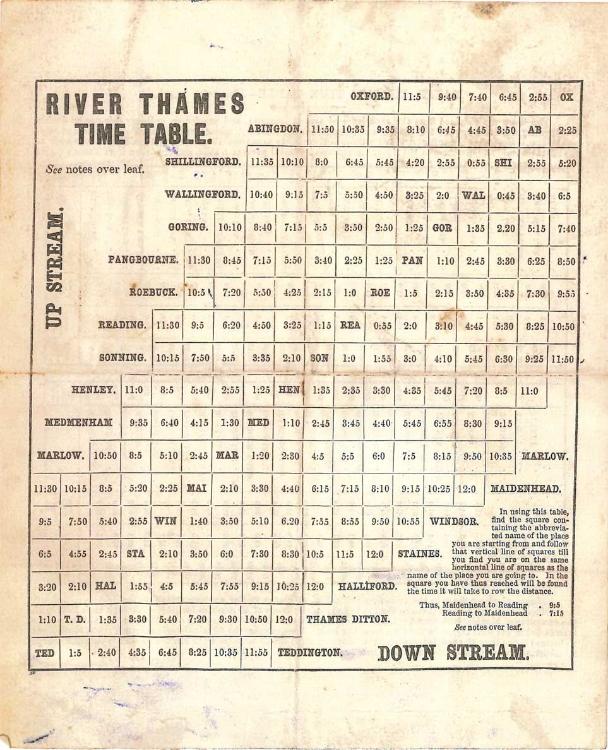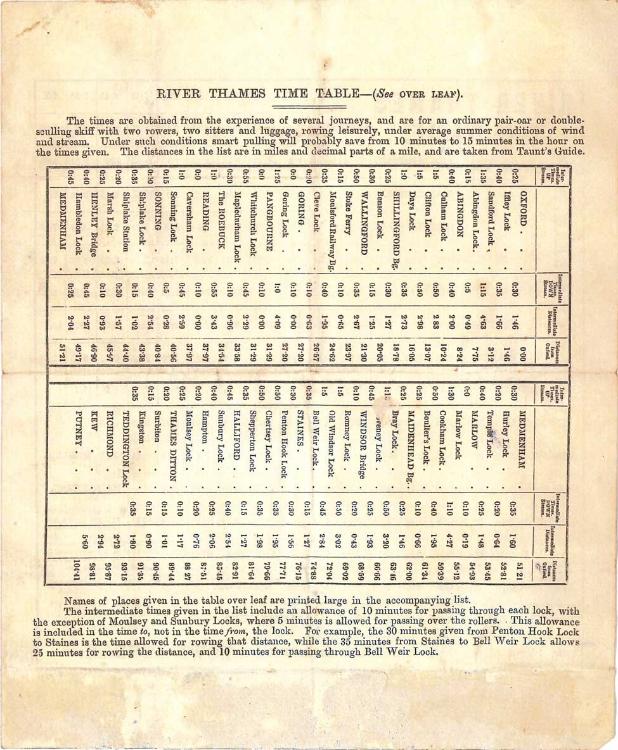A contributor to one of my favourite blogs, Hear the Boat Sing, has posted scans of a Victorian publication giving approximate times to row between various points on the Thames (the original post is here:
https://heartheboatsing.com/2020/05/09/when-shall-we-see-the-thames-again/)
The times are from the experience of the unknown compiler, based on trips in a double skiff with two passengers and luggage. 10min is allowed for passing through locks, which seems a bit short. Lock keepers are much keener on filling the lock these days I think.

